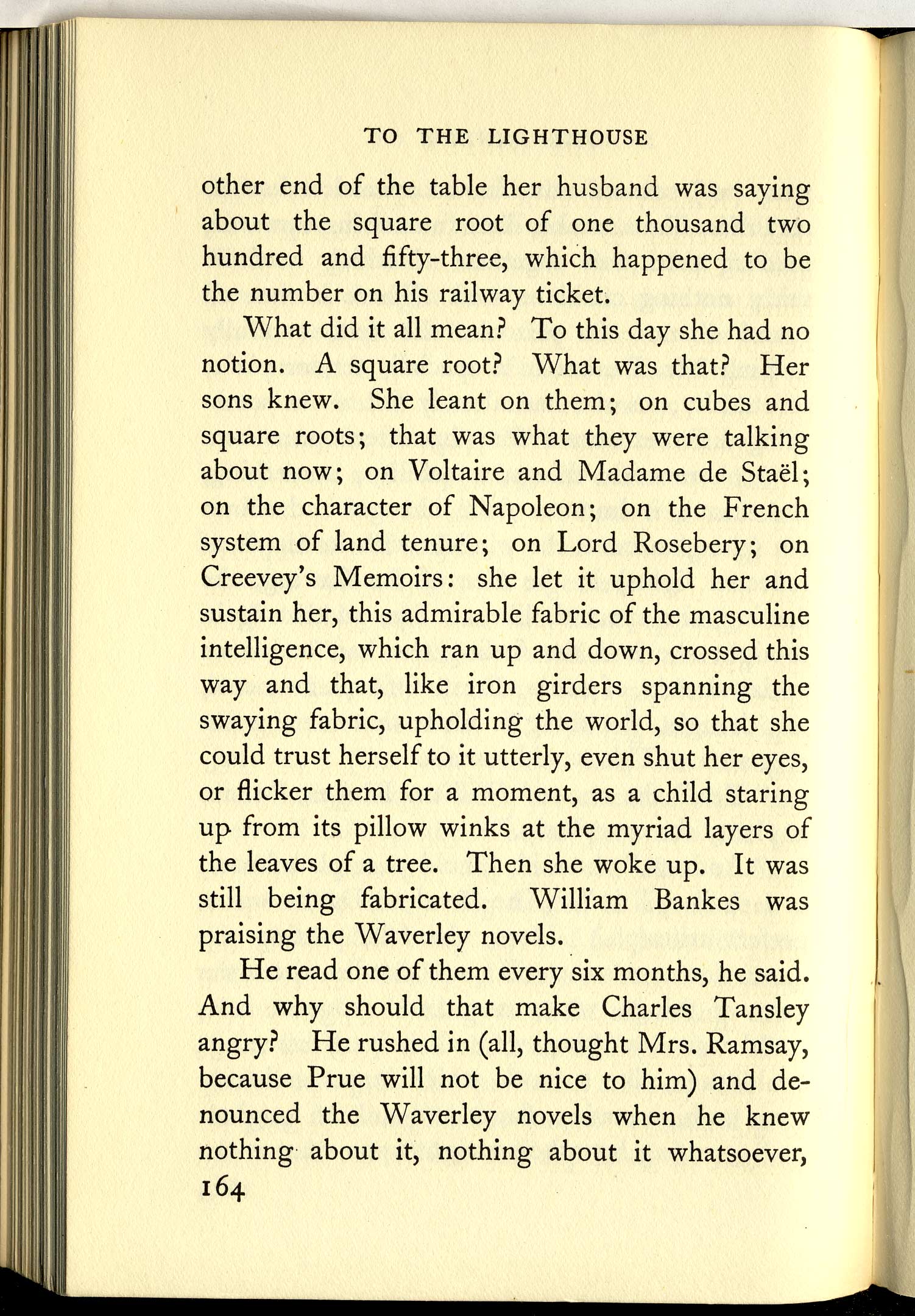
T0 THE LIGHTHOUSEother end of the table her husband was sayingabout the square root of one thousand twohundred and fifty-three, which happened to bethe number on his railway ticket.
What did it all mean? To this day she had nonotion. A square root? What was that? Hersons knew. She leant on them; on cubes andsquare roots; that was what they were talkingabout now; on Voltaire and Madame de Stael;on the character of Napoleon; on the Frenchsystem of land tenure; on Lord Rosebery; onCreevey’s Memoirs: she let it uphold her andsustain her, this admirable fabric of the masculineintelligence, which ran up and down, crossed thisway and that, like iron girders spanning theswaying fabric, upholding the world, so that shecould trust herself to it utterly, even shut her eyes,or flicker them for a moment, as a child staringup from its pillow winks at the myriad layers ofthe leaves of a tree. Then she woke up. It wasstill being fabricated. William Bankes waspraising the Waverley novels.
He read one of them every six months, he said.And why should that make Charles Tansleyangry? He rushed in (all, thought Mrs. Ramsay,because Prue will not be nice to him) and denounced the Waverley novels when he knewnothing about it, nothing about it whatsoever,164









